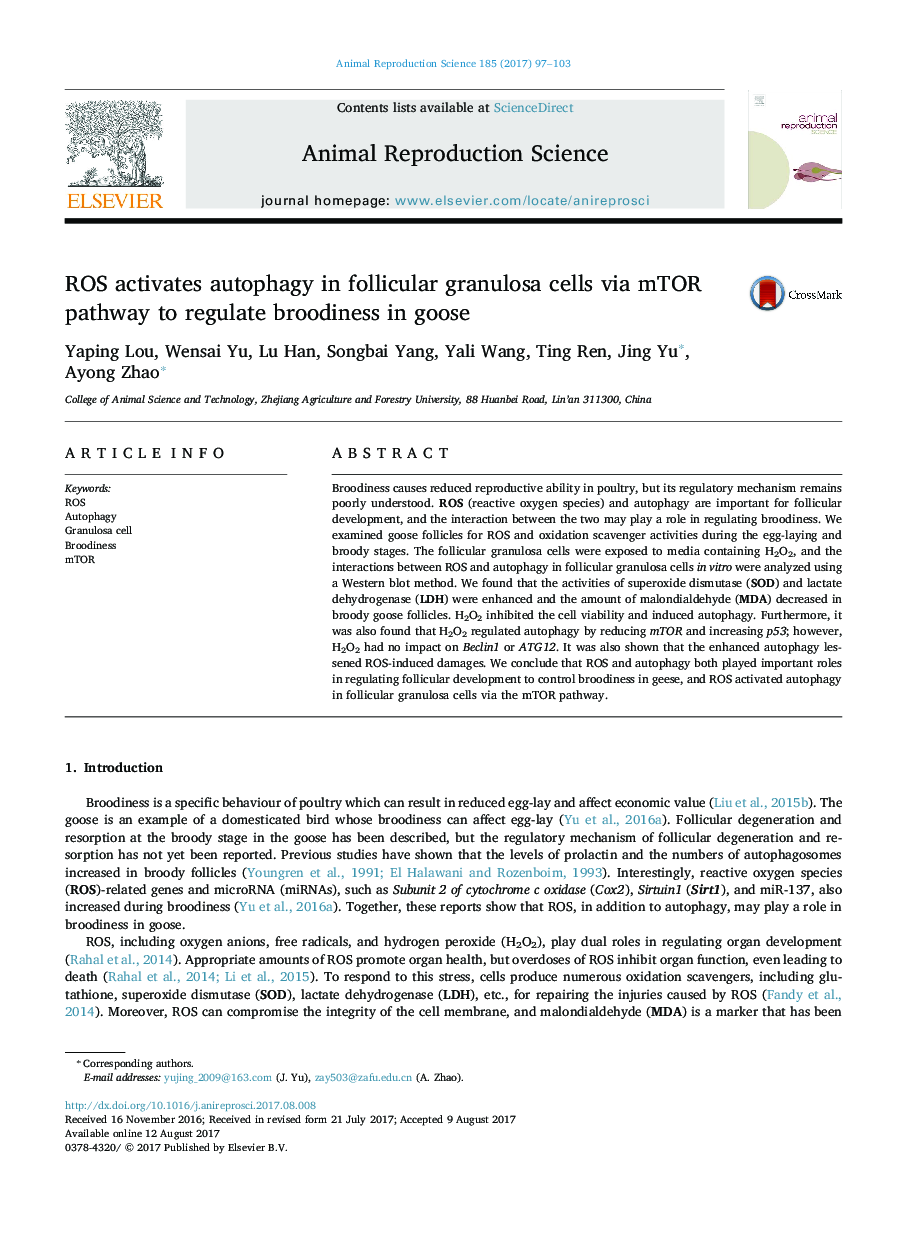| Article ID | Journal | Published Year | Pages | File Type |
|---|---|---|---|---|
| 5520204 | Animal Reproduction Science | 2017 | 7 Pages |
â¢ROS and autophagy both played important roles in regulating follicular development to control broodiness in goose.â¢ROS crosstalk with autophagy in granulosa cells.â¢ROS activated autophagy in follicular granulosa cells via mTOR pathway.
Broodiness causes reduced reproductive ability in poultry, but its regulatory mechanism remains poorly understood. ROS (reactive oxygen species) and autophagy are important for follicular development, and the interaction between the two may play a role in regulating broodiness. We examined goose follicles for ROS and oxidation scavenger activities during the egg-laying and broody stages. The follicular granulosa cells were exposed to media containing H2O2, and the interactions between ROS and autophagy in follicular granulosa cells in vitro were analyzed using a Western blot method. We found that the activities of superoxide dismutase (SOD) and lactate dehydrogenase (LDH) were enhanced and the amount of malondialdehyde (MDA) decreased in broody goose follicles. H2O2 inhibited the cell viability and induced autophagy. Furthermore, it was also found that H2O2 regulated autophagy by reducing mTOR and increasing p53; however, H2O2 had no impact on Beclin1 or ATG12. It was also shown that the enhanced autophagy lessened ROS-induced damages. We conclude that ROS and autophagy both played important roles in regulating follicular development to control broodiness in geese, and ROS activated autophagy in follicular granulosa cells via the mTOR pathway.
